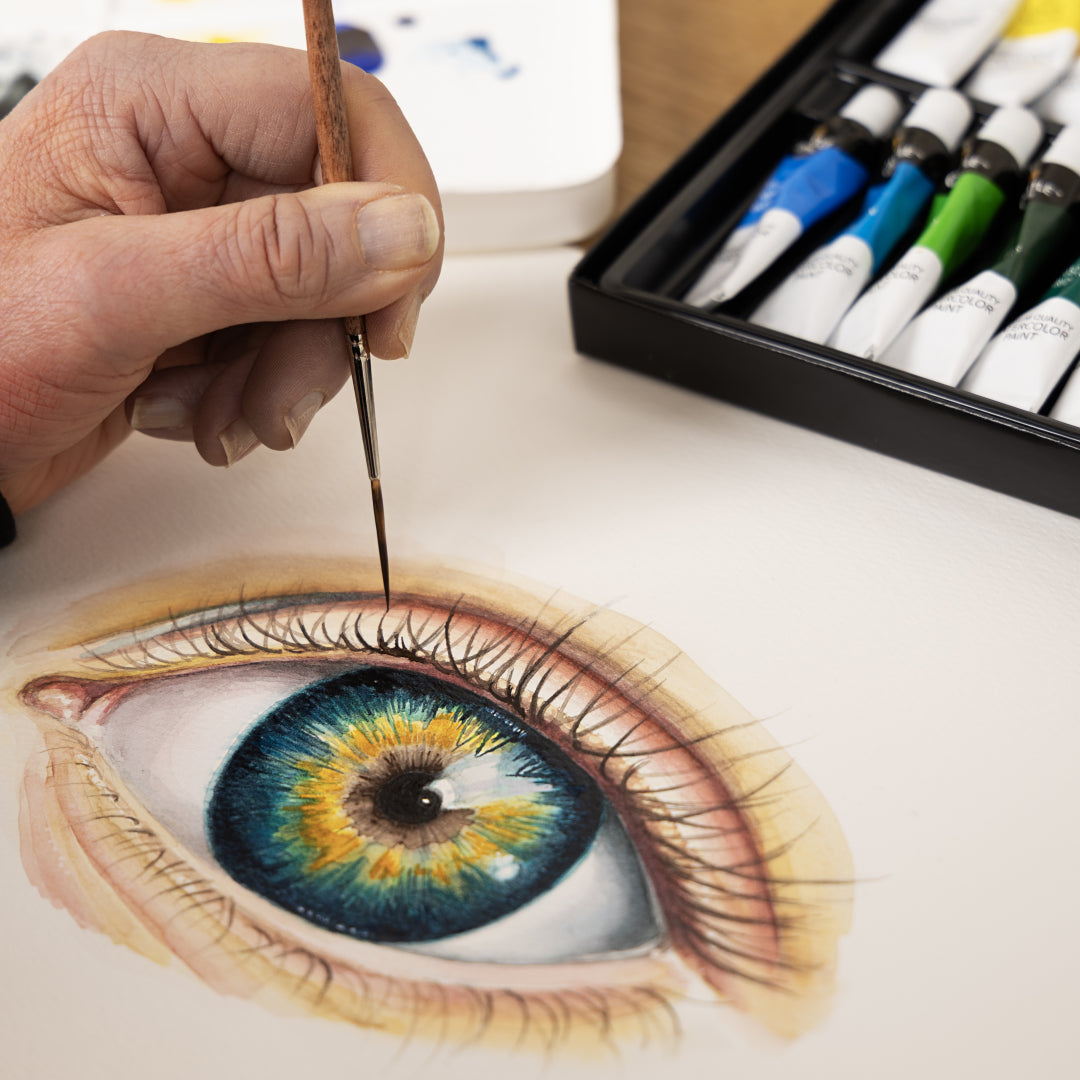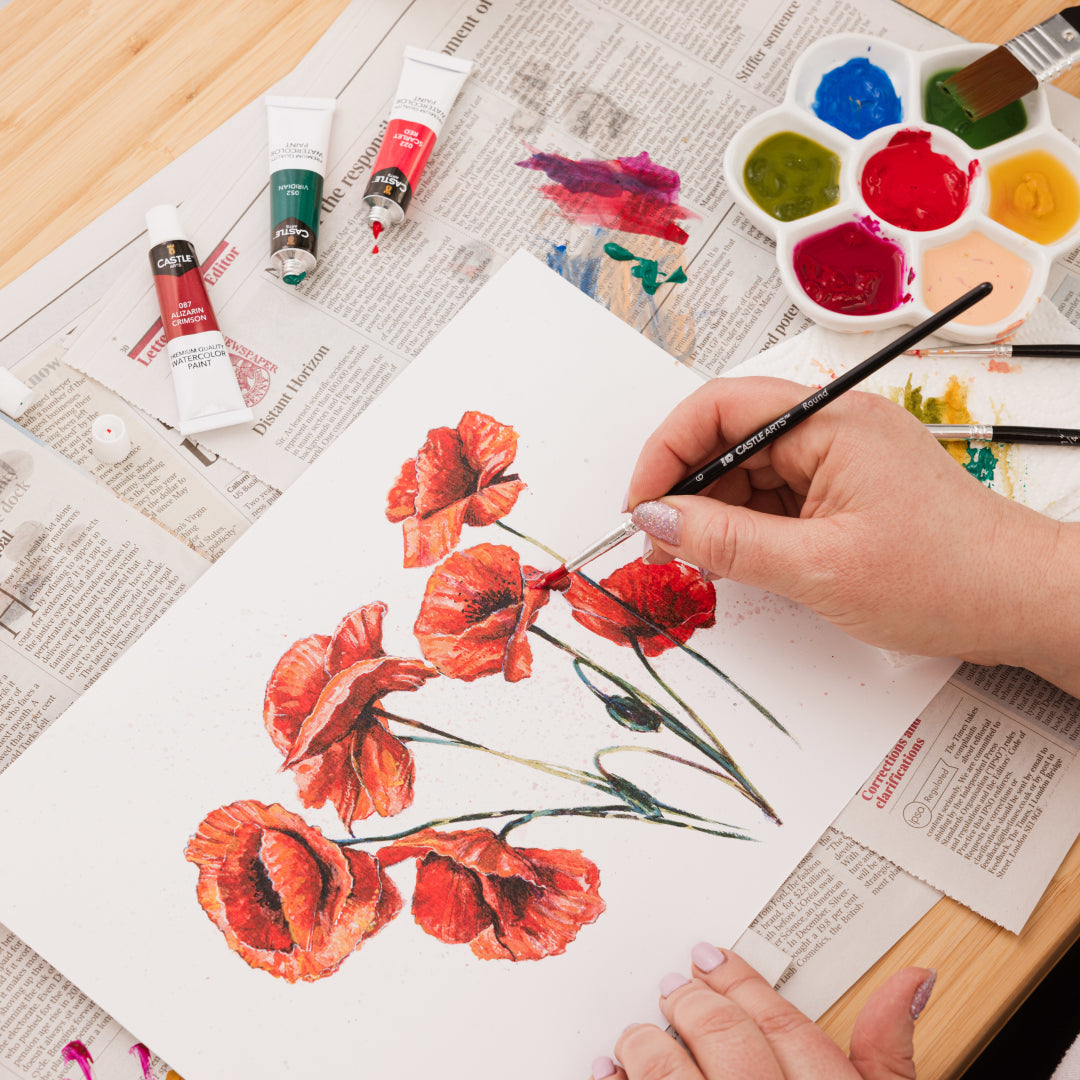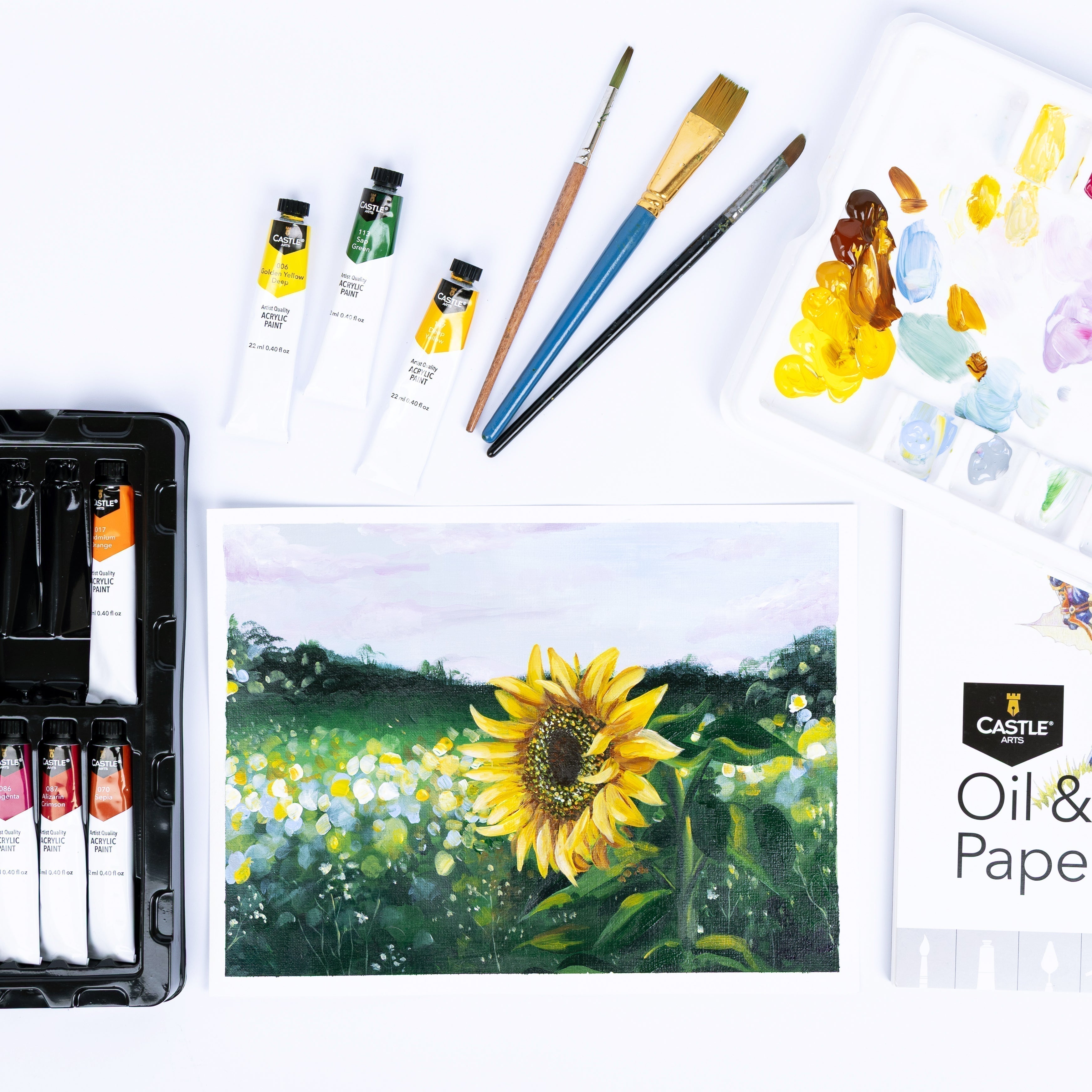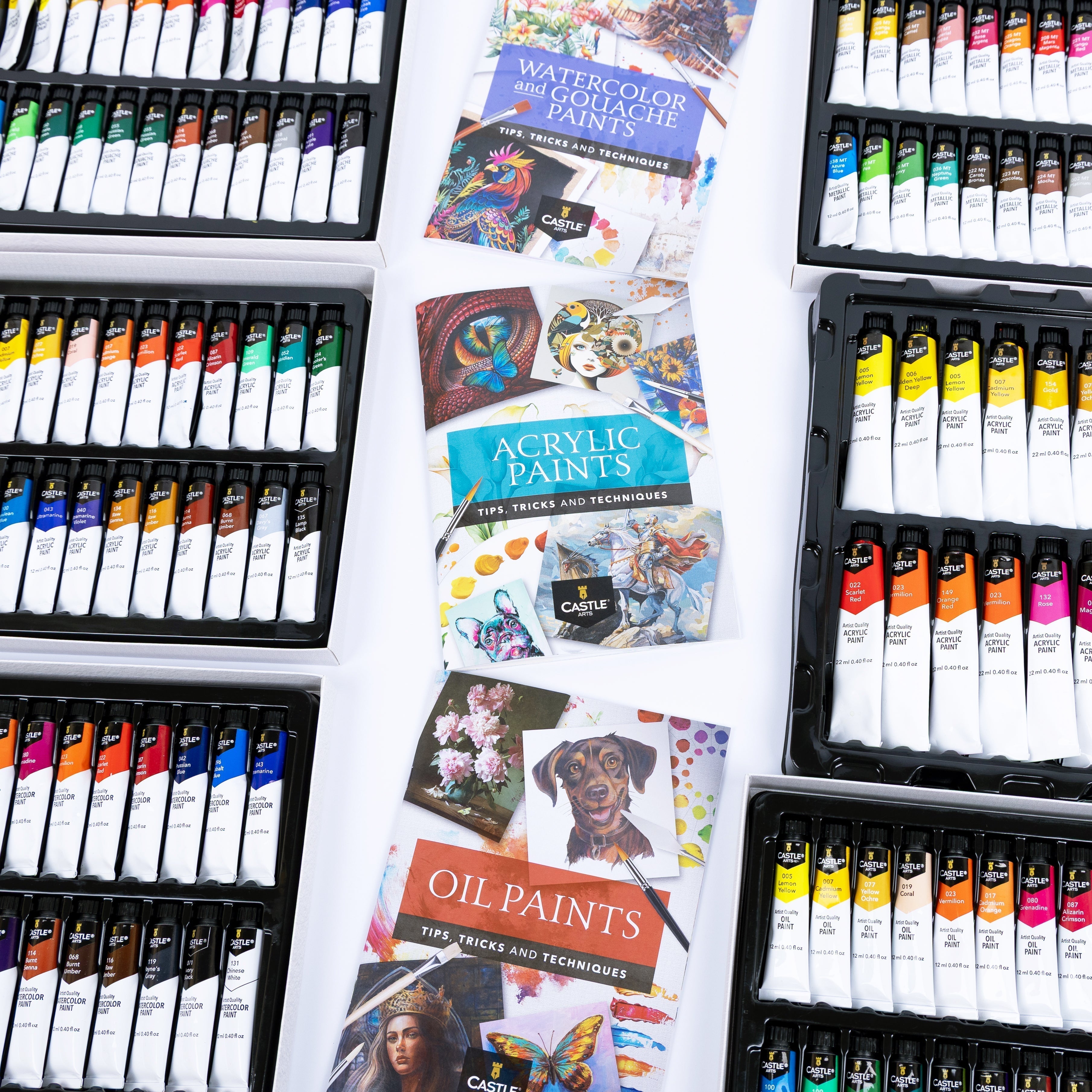
Ever dreamed of unleashing your inner Van Gogh but felt unsure where to begin? For many beginners – and even seasoned artists – choosing the right type of paint for a new project can be daunting. There’s a bewildering array of paints out there, each with its unique properties and effects, so how do you decide which one is the best fit for your creative vision?
This guide breaks down the different kinds of paint and the benefits of each, with tips from our Resident Artist, Hannah Thorpe, to help you get to grips with each one. Whether you’re simply looking for the best paint for artists or curious about giving a new technique a go, we’re here to help you get started.

Watercolour
A favourite of botanical and expressive landscape artists, watercolour lends itself to delicate detail and huge skies alike. Known for its translucent finish and versatility, watercolour is loved by both beginners and experienced artists.
Watercolour is a matte medium available in solid (pencils or pans) and liquid (tube) form. It can be used on wet or dry surfaces to create a range of effects, and because it’s water-soluble—even after it dries—you can manipulate your work to refine details or blend colours. However, this also means accidental spills can wreak havoc on your masterpiece, so maybe keep that cup of tea at a safe distance!
Because of its translucency, light colours should always be laid down first, with deeper tones on top.
Why it’s great: Watercolour’s light, translucent layers create a luminous effect that’s perfect for capturing natural light and delicate details.
Hannah’s tip: Invest in a large round watercolour paintbrush which you can use for both washes and detail.

Gouache
This often-overlooked paint type combines the best qualities of watercolour and acrylic, making it a favourite among illustrators and graphic artists. Usually available in tubes, it can be watered down like watercolour to create vibrant washes, or laid down thickly like acrylic to create bold, opaque layers.
Gouache is prized for its vivid colours, quick-drying properties, and ultra-matte finish, but one of its best features is that it can be reactivated with a few drops of water. You can re-wet dry paint on your palette or painting to keep working, making gouache both versatile and economical with zero waste! It’s also a staple in many watercolourists’ paint collections, as white gouache is often used to add light to watercolour paintings.
Why it’s great: Gouache is highly pigmented and can be re-wet, allowing mistakes to easily be fixed.
Hannah’s tip: Gouache is great for layering, but use a gentle touch when adding additional layers of gouache to existing ones – you don’t want to create a muddy mess.

Acrylic
A relative newcomer to the paint scene, acrylic has quickly become a favourite among artists for its vibrancy, fast-drying properties, and versatility. Acrylic is one of the best paints for artists who love to experiment, perfect for everything from portraiture to landscapes and adaptable to surfaces like paper, canvas, wood, and even rocks!
Acrylic is a water-soluble tube paint that becomes insoluble when dry. It’s generally considered to be an opaque medium, which means you can layer light colours over dark, and vice versa. Acrylic mediums can be added to make the paint thicker, more glossy, slower to dry, or suitable for glazing, opening up a world of creative possibilities. And who says you have to stick to brushes? Acrylic works brilliantly with painting knives and sponges too.
Why it’s great: Acrylic is beginner-friendly, very forgiving, and works for nearly any style or subject.
Hannah’s tip: Wash acrylic paintbrushes well— acrylic sticks fast!

Oils
Oil paint has been a staple of the art world for centuries, with masters like Van Gogh and Rembrandt showing us its incredible potential. Though the greats used it to make their mark, oils aren’t just for professionals.
Loved for their rich, dense, and luminous colours as well as their excellent layering properties, oil paints are perfect for landscapes, portraits, still-life paintings, and more. And with a few handy tips, they’re surprisingly beginner-friendly.
A major benefit of oil paint is its slow drying time, allowing artists to work and rework their pieces for days, or even weeks. This extended flexibility means paint can be pushed and pulled on the canvas to achieve the desired effect, making oils ideal for creating rich textures and intricate details.
That said, oils do require a bit of extra preparation and care. Since the pigments are suspended in oil, you’ll need solvents to thin the paint and clean your brushes (and hands!), as they can’t be rinsed with water like other mediums. Oil paintings can also take months to fully cure, but the stunning results are well worth a bit of patience.
As with acrylics, oil mediums can be used to speed up drying time or add body to the paint, and they can be applied with a brush or a painting knife for added versatility.
Why it’s great: Oil paint is vibrant, easily blendable, and slow-drying, giving you lots of time to make adjustments.
Hannah’s tip: Use oil paint “fat over lean” —start with thinner layers and finish with thicker ones to prevent cracking.
Which Paint Is Right for You?
Now you know a bit more about the types of paint for art, but you might still be wondering, “What’s the best paint for me?” The answer depends on your goals:
- If you love delicate, translucent effects, start with watercolours.
- Want bold, fast-drying colours? Try acrylics.
- For a timeless, rich finish, oils might be your best bet.
- And if you’re somewhere in between, don’t sleep on gouache—it’s a hidden gem in the world of art paints.
Ready to Get Started with Painting?
No matter which medium you choose, having the right supplies can make all the difference. Explore Castle Arts' range of paints for high-quality watercolours, gouache, acrylics, and oils, designed for artists of all levels and to help you create your best work yet.






Share: